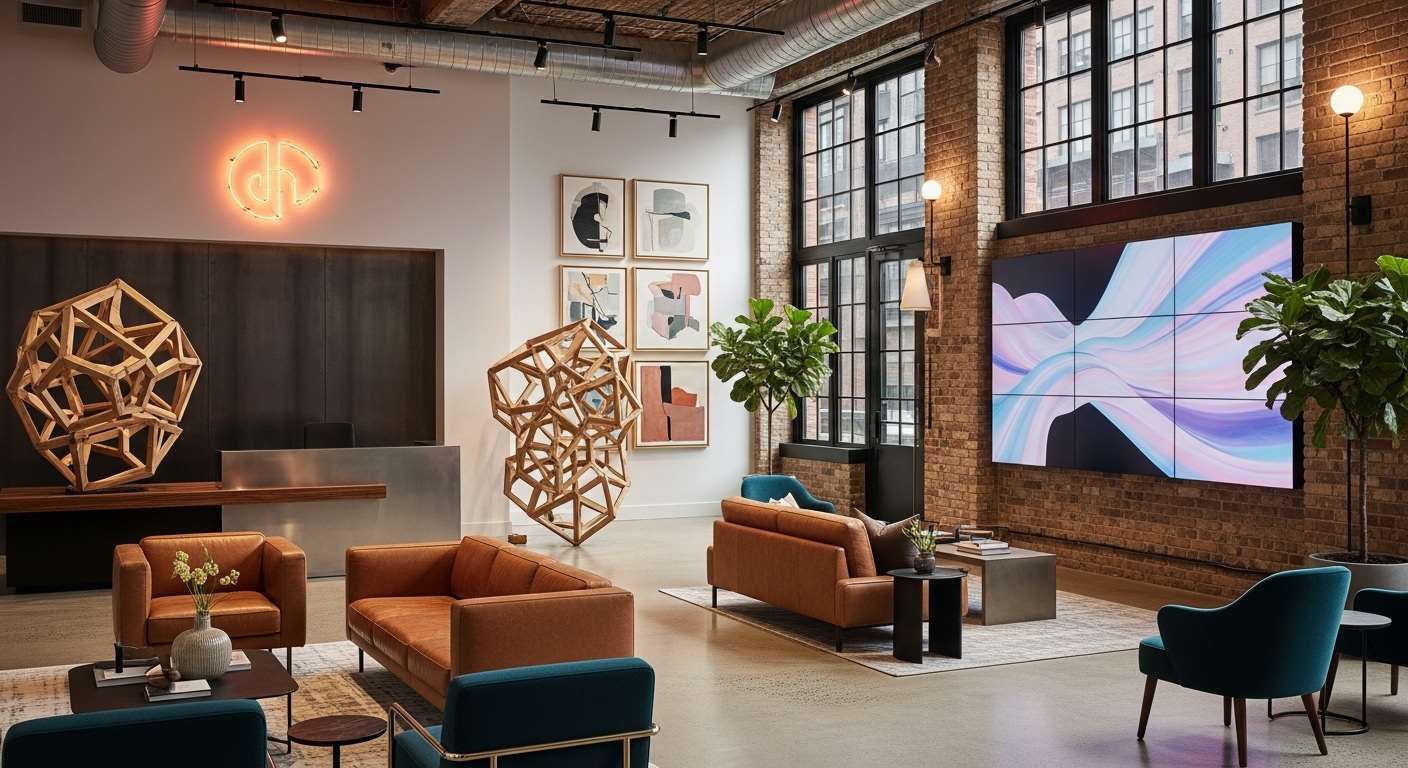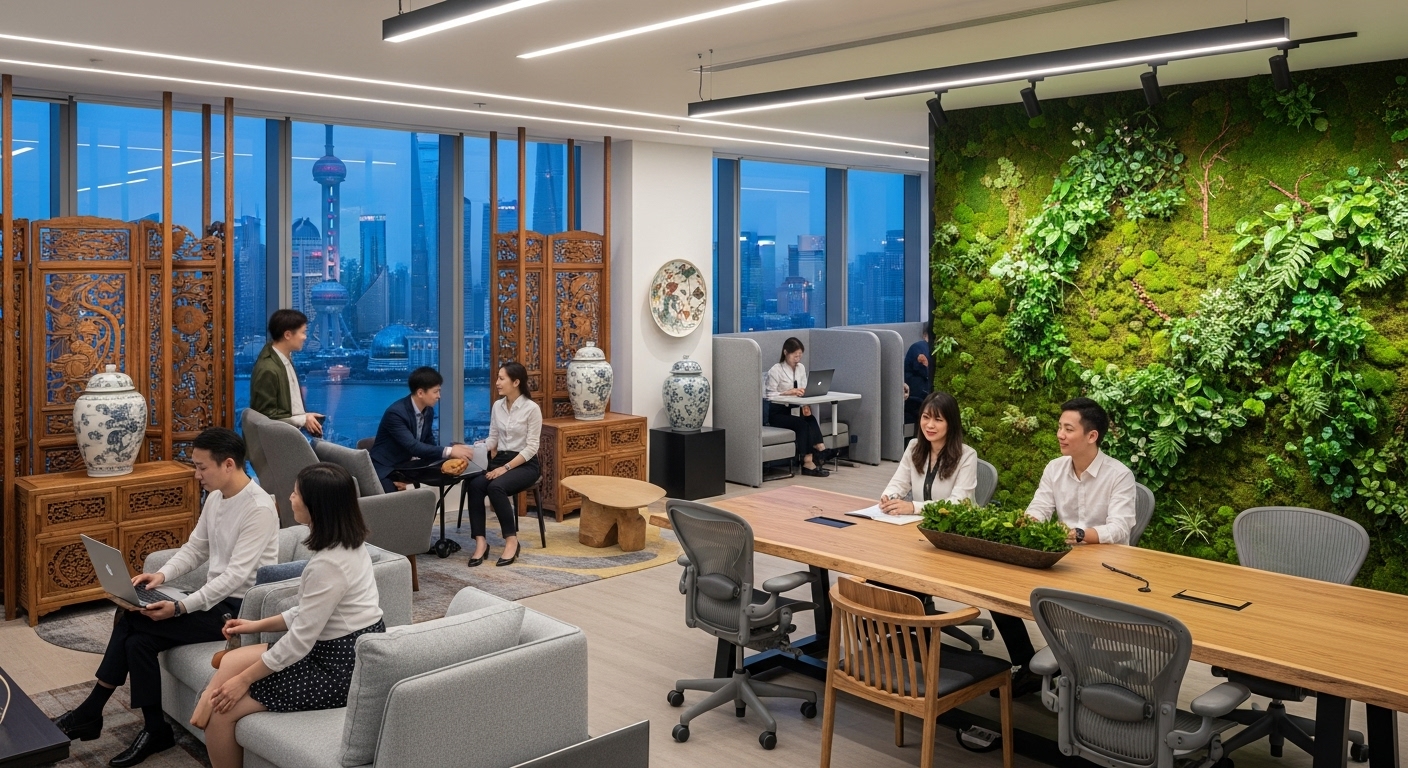In today’s fast-paced business environment, the line between the digital and physical workspace has all but disappeared. A modern office is no longer just a physical location; it’s a complex, interconnected ecosystem where technology and logistics must work in perfect harmony. For companies aiming to thrive, treating IT infrastructure and office design as separate projects is a relic of the past. The new imperative is a unified approach, where the digital backbone is architected in tandem with the physical blueprint from day one. This integration is crucial for fostering productivity, enhancing security, and building a scalable foundation for future growth. Especially in burgeoning tech hubs, this holistic strategy is what separates leading-edge companies from those struggling with operational friction and technological bottlenecks. A thoughtfully integrated workspace becomes a strategic asset, directly enabling the agility and efficiency required to compete.
The new strategic imperative: integrating IT from day zero
For too long, IT setup has been an afterthought in office design—a task relegated to the final stages of a build-out, often leading to costly retrofitting and compromised performance. The modern approach flips the script entirely, embedding IT planning into the architectural DNA of the workspace from its very inception. This ‘Day Zero’ integration means that critical decisions about a company’s digital infrastructure are made alongside choices about floor plans, electrical layouts, and furniture. It involves mapping out data cable pathways before the walls go up, designing dedicated server rooms with adequate cooling and power from the start, and strategically placing wireless access points to ensure blanket high-speed coverage without dead zones. This foresight is particularly vital for businesses in Burnaby, where the demand for hybrid work models requires a robust and reliable network that can support seamless remote collaboration and in-office connectivity. By treating IT as a core utility, like electricity or plumbing, companies can avoid the logistical nightmares of drilling through concrete to run cables or discovering their server closet is a poorly ventilated fire hazard. This proactive strategy ensures that the physical space is purpose-built to empower the technology that drives the business, rather than constrain it.
Architecting the digital backbone: core IT infrastructure components
A high-performance workspace is built upon a robust digital backbone. This foundational layer of IT infrastructure is what enables every click, call, and collaboration. The first critical component is structured cabling. Opting for high-grade cabling like Category 6a (Cat6a) is a forward-thinking investment, supporting higher bandwidth and minimizing interference, ensuring the network can handle future demands. This cabling infrastructure needs a central nervous system: the server room. A properly designed server room is more than a closet; it’s an environment engineered for reliability, with dedicated cooling systems to prevent overheating, uninterruptible power supplies (UPS) to guard against outages, and physical security to protect critical assets. The next layer is the active network hardware. This includes scalable switches that can handle the data load of all connected devices, from computers to IoT sensors, and enterprise-grade routers and firewalls that manage and secure the flow of traffic. Finally, wireless connectivity is non-negotiable. A meticulously planned Wi-Fi deployment, using multiple access points to create a seamless mesh network, eliminates frustrating dead zones and ensures that employees can work efficiently from any corner of the office, be it a desk, a conference room, or a breakout lounge. This is the bedrock of the modern, connected office.
The cybersecurity fortress: securing your physical and digital assets
In an integrated workspace, security is a multi-layered concept that spans both the physical and digital realms. A state-of-the-art firewall may be useless if the server room door is left unlocked. True security is achieved when office logistics and IT protocols work in concert. Physically, this begins with access control. Designing the office layout to restrict entry to sensitive areas like the server room or data storage closets is the first line of defense. This can be implemented through keycard systems that not only limit access but also create a digital log of who enters and when. On the digital side, a comprehensive cybersecurity strategy is paramount. This involves deploying enterprise-grade firewalls to police network traffic, implementing advanced endpoint protection on all devices, and establishing robust data backup and disaster recovery plans. Recent trends show a significant focus on proactive threat detection and mitigation. Businesses are increasingly turning to managed IT service providers to implement these robust security measures, protecting them against the ever-present threats of malware and ransomware. A unified security plan also considers the human element, with policies for secure Wi-Fi access, password management, and employee training on identifying phishing attempts, ensuring every team member is a part of the defense.
Enabling flexibility: IT for the modern hybrid workspace
The rise of the hybrid work model has fundamentally transformed workspace requirements. An office is no longer the sole place of work but a hub for collaboration, connection, and focused tasks that are better done in person. This shift places immense pressure on a company’s IT infrastructure to provide a seamless and consistent experience, regardless of an employee’s location. The key to this flexibility is a robust suite of cloud-based solutions. Platforms like Microsoft 365 and Google Workspace are the cornerstone, allowing real-time collaboration on documents and secure access to files from anywhere. This is powerfully augmented by Virtual Private Networks (VPNs) that provide a secure, encrypted tunnel for remote employees to access the company’s internal network. Furthermore, high-definition video conferencing systems and unified communication tools are essential for bridging the gap between in-office and remote team members. The office logistics in growing business centers like Burnaby now reflect this trend, with a demand for flexible layouts featuring ‘hot desks,’ technology-equipped meeting rooms, and quiet zones. The IT setup must directly support this physical adaptability, ensuring that any desk can become a fully functional workstation with a simple plug-in, and that booking a meeting room is an integrated digital experience.
Smart office logistics: beyond the desk and chair
As IT becomes more deeply woven into the fabric of the workplace, the concept of office logistics expands beyond furniture procurement and placement. It now encompasses the integration of smart technologies that enhance efficiency, comfort, and employee well-being. This evolution is powered by the Internet of Things (IoT), where everyday objects are connected to the network, collecting data and automating responses. For instance, a smart office can feature intelligent lighting systems that adjust based on natural light levels or occupancy, reducing energy costs. Similarly, smart climate control can learn usage patterns to optimize heating and cooling, creating a more comfortable environment while saving resources. Even room booking can be streamlined with sensors that show real-time availability, preventing scheduling conflicts. These IoT devices, however, are only as good as the network they run on. A successful smart office deployment requires a robust and secure IT infrastructure capable of handling the data traffic from hundreds or even thousands of connected sensors. This is where the synergy between logistics and IT becomes clear: the logistics team identifies the needs for a smarter environment, and the IT team builds the reliable network foundation required to bring that vision to life.
The logistical flow: from procurement to deployment
A unified IT and logistics strategy shines during the critical phase of procurement and deployment. This is where planning meets execution, and coordination is everything. The process begins with strategic procurement, where IT and facilities teams collaborate to select equipment that meets both technical specifications and the physical constraints of the new space. This prevents situations where a crucial server rack is too large for its intended closet or a new set of monitors lacks the right port for the company’s laptops. Once equipment is ordered, a detailed logistical plan is essential. This includes coordinating delivery schedules with building access, ensuring there is secure storage space for assets before they are installed, and aligning the IT deployment timeline with the construction or renovation schedule. A crucial, often overlooked, step is asset tagging. Implementing a system to tag and track every piece of hardware from the moment it arrives streamlines inventory management and simplifies future maintenance. The final step, physical deployment, requires close collaboration between IT technicians, movers, and furniture installers. By working from a shared blueprint, teams can ensure that desks are placed where data ports are active and that conference rooms are fully cabled for AV equipment before the first meeting is ever booked, ensuring a smooth, frustration-free launch.
Future-proofing your workspace: scalability and adaptability
The one constant in technology and business is change. A workspace designed for today’s needs may be obsolete in just a few years. Therefore, the ultimate goal of unifying IT and logistics is to build a future-proof environment that can scale and adapt with the company. On the IT side, this means choosing scalable solutions. This could involve selecting network switches with extra ports to accommodate a growing team, opting for a cloud-based server infrastructure that can be easily expanded, or implementing a modular cabling system that simplifies future upgrades. This forward-thinking approach saves significant time and money down the line. On the logistics side, adaptability is key. This translates to choosing modular furniture that can be easily reconfigured to create different work zones and designing a floor plan that can evolve from open-plan to include more private offices if needed. Companies in dynamic areas such as Burnaby must be agile to seize new opportunities. An adaptable workspace is a physical manifestation of this agility. By creating an office that is designed for growth and change from both a technological and physical standpoint, businesses are not just building an office for today; they are investing in a strategic asset that will support their ambitions for years to come.
In conclusion, the successful modern workspace is a testament to the power of integration. By breaking down the silos between IT and office logistics, businesses can create environments that are more than the sum of their parts. This unified approach, where the digital infrastructure is seamlessly woven into the physical design from the very beginning, is the new gold standard. It leads to a workspace that is inherently more efficient, secure, and adaptable to the ever-changing demands of the market. For companies, this translates into higher productivity, improved employee satisfaction, and a powerful competitive edge. The foundation of any forward-thinking organization is its ability to connect people and technology effectively. Architecting a workspace with this principle at its core is not just good design; it is a fundamental business strategy for long-term growth and success. By treating the office as a single, connected ecosystem, businesses are building a resilient foundation ready for the challenges and opportunities of the future.





